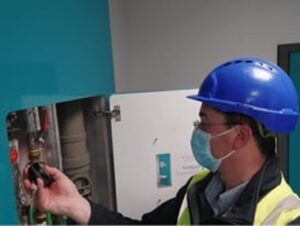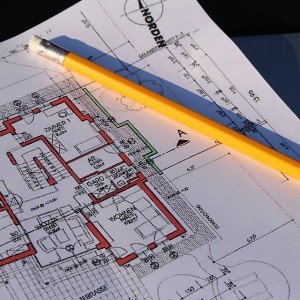In this article, Water Hygiene Centre’s Senior Consultant and Authorising Engineer, Roy Sullivan, discusses Legionella control for architects and building engineers including the risks present in hot and cold water systems, regulation and guidance along with the principal designer responsibilities.
 Water for building services isn’t entirely free from aquatic organisms; therefore, measures must be taken to guard against conditions that encourage the growth of water-borne pathogens such as Legionella.
Water for building services isn’t entirely free from aquatic organisms; therefore, measures must be taken to guard against conditions that encourage the growth of water-borne pathogens such as Legionella.
To avoid potentially costly remedial works, the design of new buildings and their water systems should be controlled to ‘get it right the first time’, essentially to ‘design out’ risk, which in turn will lead to a safer water system having had the correct design, installation, commissioning, maintenance and operation.
Legionella risk in hot and cold water systems
The Principal Designer must understand their responsibilities concerning the control of potential water-borne pathogens, including Legionella, when designing hot and cold-water systems; whether they are for a new build, or refurbishment works of an existing building.
During the design process, the responsibility for water safety, alongside all design health and safety matters under the Construction (Design and Management) Regulations (2015), belongs to the principal designer. They are required to correctly plan, manage, and coordinate the design works and any construction work that may be required.
Regulation and Guidance
The planning and design of water systems that are to be incorporated into a project, whether a new build, refurbishment, or extension of an existing system, can be a long and complex process. All engineering and building standards must be met at the initial design stage. Key documents that give some direction in this field are:
Principal Designer Responsibilities
 Projects and designs will differ hugely in size and complexity. Some may be a simple change of use of a room whereby a wash hand basin is being added or at the other end of the scale we may have a new hospital wing or department. That said, equal care and consideration must be given to each project, regardless of complexity, to ensure that potential risk is not introduced from water-borne pathogens. If inherent risk is unavoidable, it must be As Low As Reasonably Practicable. (ALARP)
Projects and designs will differ hugely in size and complexity. Some may be a simple change of use of a room whereby a wash hand basin is being added or at the other end of the scale we may have a new hospital wing or department. That said, equal care and consideration must be given to each project, regardless of complexity, to ensure that potential risk is not introduced from water-borne pathogens. If inherent risk is unavoidable, it must be As Low As Reasonably Practicable. (ALARP)
The Principal Designer is responsible for:
- Developing a clear brief of the water system design, taking into account input received from those responsible for water safety including your Water Safety Group (WSG).
- Ensuring that the specification for the installation and the construction project (i.e., Project Specification) meets the requirements of the original design and requirements of the Water Safety Plan.
- Preparation of:
- Documentation of the project water / Legionella risk assessment, identifying the water-related risks during the installation, commissioning, maintenance and operation phases of the installation at agreed time intervals.
- Preparation of detailed method statements describing the measures required to control those risks.
Other Considerations

Roy Sullivan, Senior Consultant, Water Hygiene Centre
There must be open and direct dialogue between the Principal Designer, stakeholders, the Water Safety Group (for healthcare environments) and end users to ensure the new design will provide the required water quality for its intended purpose.
All those involved in the design of water systems, for any sized project, should undertake Legionella training from a recognised service provider. If those involved in planning and design are aware of the risk from water-borne pathogens, it becomes easier to avoid those risks in the first instance, avoid them in the future, and at least put mitigation in place to manage residual risks to acceptable levels.
Conclusion
Getting it “Right First Time” can be a lengthy and challenging process. It is much harder to rectify problems once the project is completed than it is to “design out” any issues at the design stage or rectify issues identified during the construction phase.
Everyone involved in the design process must be aware of the potential risks associated with water-borne pathogens and understand their role and responsibilities within that design team. Communication is key… it’s good to talk!
The Safety Conversation Podcast: Listen now!
The Safety Conversation with SHP (previously the Safety and Health Podcast) aims to bring you the latest news, insights and legislation updates in the form of interviews, discussions and panel debates from leading figures within the profession.
Find us on Apple Podcasts, Spotify and Google Podcasts, subscribe and join the conversation today!

 Water for building services isn’t entirely free from aquatic organisms; therefore, measures must be taken to guard against conditions that encourage the growth of water-borne pathogens such as Legionella.
Water for building services isn’t entirely free from aquatic organisms; therefore, measures must be taken to guard against conditions that encourage the growth of water-borne pathogens such as Legionella. Projects and designs will differ hugely in size and complexity. Some may be a simple change of use of a room whereby a wash hand basin is being added or at the other end of the scale we may have a new
Projects and designs will differ hugely in size and complexity. Some may be a simple change of use of a room whereby a wash hand basin is being added or at the other end of the scale we may have a new 

It’s so important to consider these kinds of things during the design process. Especially if you can engineer a design to prevent “dead legs” in the system. Of course, it’s just as important to keep maintaining and treating the system after it’s been built!